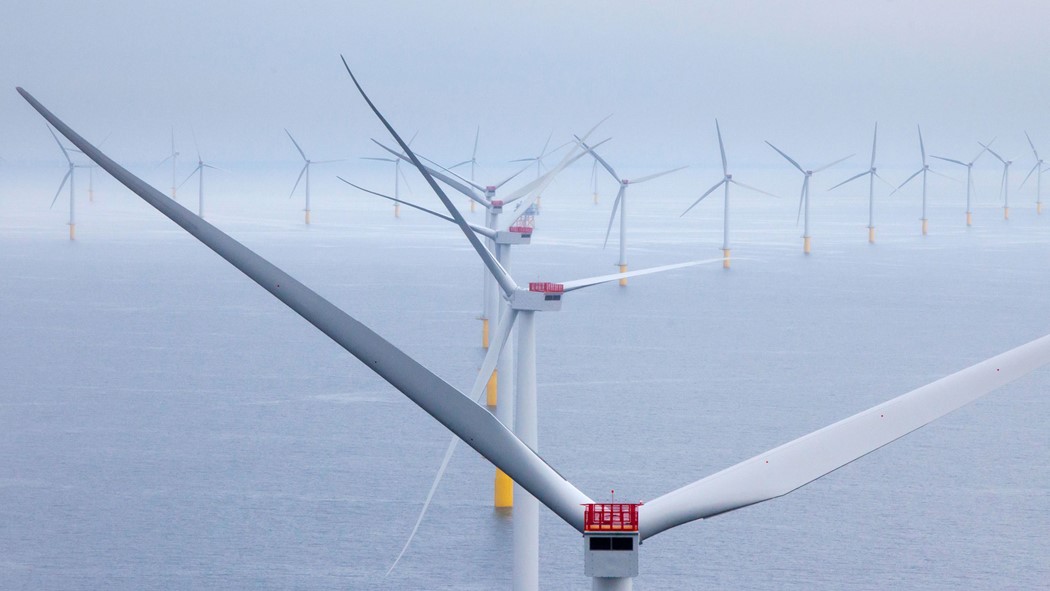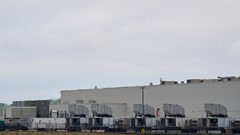UK Clean Power Goal Slips Further Out of Reach After Wind Farm Axed
May 07, 2025 by Bloomberg(Bloomberg) -- The UK’s goal of having a clean power grid by 2030 is looking even more difficult to achieve after Denmark’s Orsted A/S canceled plans to build a massive wind farm in the North Sea on Wednesday.
Rapidly building a record amount of offshore wind is central to UK Energy Minister Ed Miliband’s ambitious plan. While reaching the clean grid target was already challenging, the cancellation of one of the biggest wind farms in the world will make it harder to achieve. And with Orsted citing insufficient returns as the reason for halting the project, it may mean UK consumers need to pay even higher prices to deliver the government’s plan.
“The Clean Power goal is definitely further out of reach in terms of the amount of capacity that needs to come online,” said Pranav Menon, senior research associate at Aurora Energy Research. “The challenge is looking bigger today.”

The government is “absolutely confident” it can meet the 2030 clean power target because Britain has a strong pipeline of projects, according to Miliband.
“Our mission is about more than one project,” Miliband said, speaking to journalists in Oslo. “It’s about a route map for the country.”
It’s politically important that the goal is achieved. Britain is pushing forward with its net zero plans despite clear opposition to green power by US President Donald Trump. Last month, the Trump administration halted construction of the Empire Wind farm off the coast of New York in a shock blow to the industry.
The UK is aiming for 95% of the country’s electricity from low-carbon sources like renewables or nuclear power by 2030. To reach that it will need at least 43 gigawatts of offshore wind capacity, nearly three times the amount already in operation. Without Orsted’s Hornsea 4 project, the UK is currently on track to have nearly 29 gigawatts in operation by then, based on the current pipeline of projects if no other developer decides to cancel, according to analysis by Aurora.
That means that over each of the next two offshore wind auctions, the government would need to procure about 7 gigawatts of capacity, matching a record level set in 2021.
“The news that Orsted will not go ahead with Hornsea 4 in its current form reflects the significant challenges the offshore wind sector is facing,” Dhara Vyas, chief executive officer of industry group Energy UK. “The loss of such a big project will raise the stakes yet further for the forthcoming Contracts for Difference auction round.”
Even if the government can procure a record amount of capacity, those wind farms would need to be delivered at a pace rarely achieved in the industry, where projects often fall behind schedule. The world’s largest project, Dogger Bank, was originally supposed to complete by 2026. But after repeated delays, the first of three 1.2 gigawatt phases of the wind farm still isn’t done.
The Clean Power plan also promises to lower bills for consumers but needing to procure as much capacity as possible, may undermine competition. The canceled Hornsea 4 project would have sold power at some £80 a megawatt hour when adjusted for inflation, only a bit below average power prices during the last year. If developers need a higher price in order to invest further, then higher subsidies will ultimately passed onto consumer bills, making the government’s priority to cut consumer energy costs harder to achieve.
©2025 Bloomberg L.P.
By


















